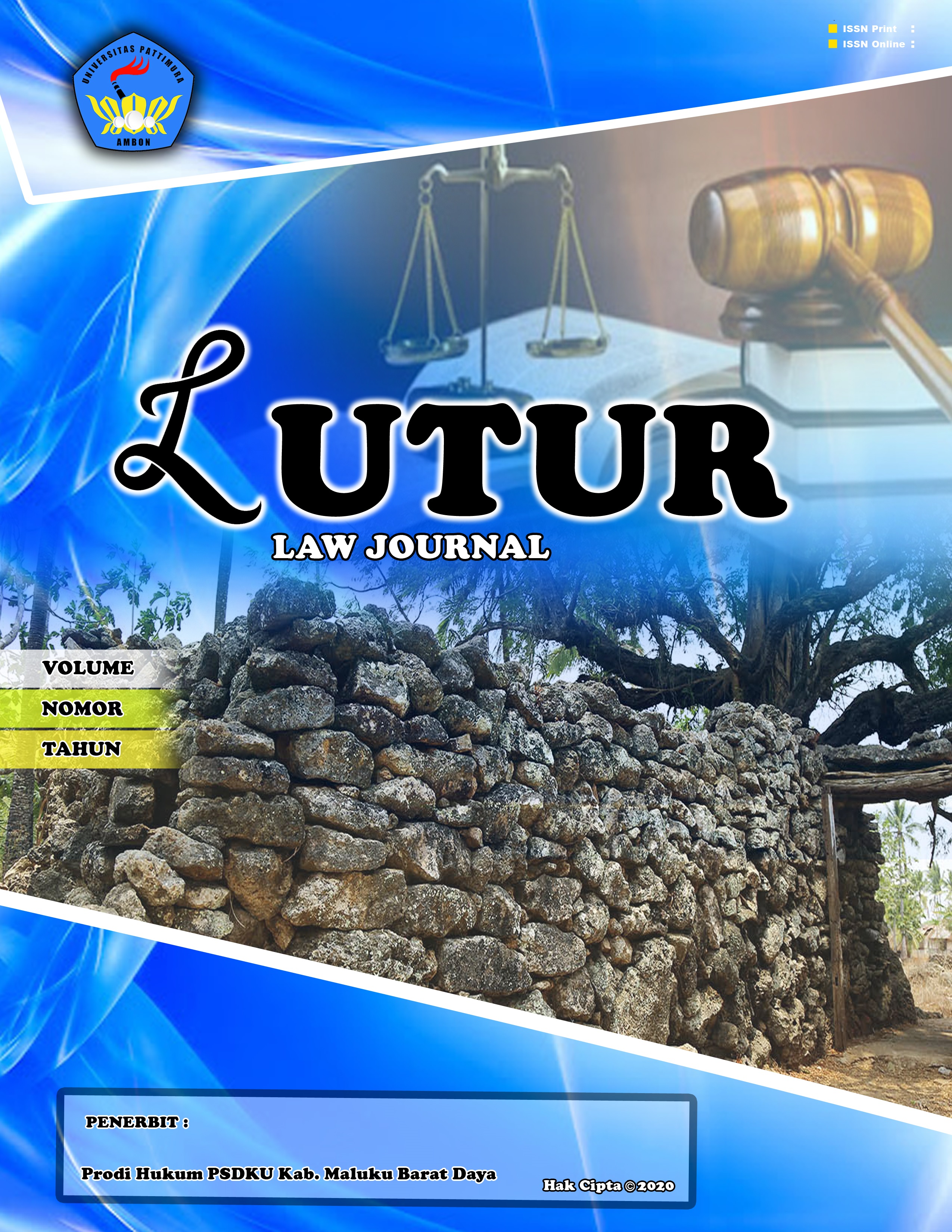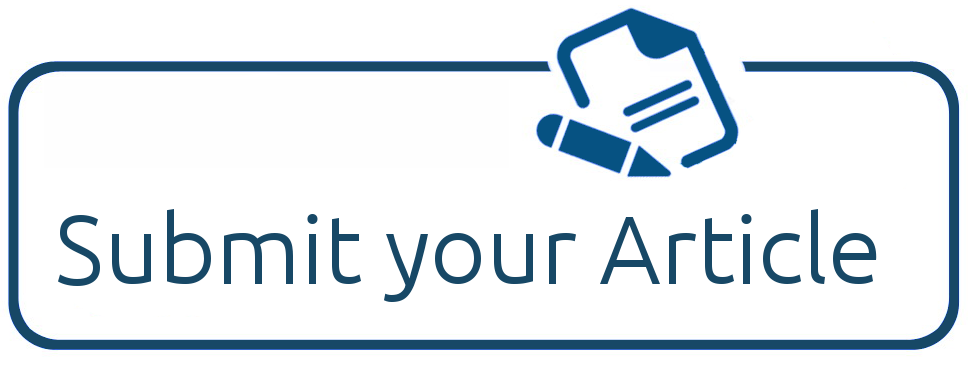Criminal Responsibility for Perpetrators of Pornography Crimes
Abstract
This article analyzes the process of determining a suspect through a preliminary examination process against a perpetrator of a crime based on applicable legal regulations. Determination of a suspect as referred to, is carried out through a case title mechanism. The purpose of this writing is to examine and analyze the criminal responsibility of the perpetrators in the pornographic videos that are distributed and to analyze and analyze the judge's considerations in imposing criminal sanctions on the perpetrators of the pornographic videos that are distributed. The research method used in analyzing and discussing this research is a type of normative legal research that uses secondary legal materials as initial data to then be continued with primary legal materials or field data and tertiary legal materials that support and provide an understanding of primary legal materials and secondary legal materials over other legal materials. The legal materials that are prioritized come from literature studies, relying on scientific books such as criminal law literature, scientific magazines, and documents, then using three research approaches consisting of the Legislation approach, conceptual approach, and case approach. The results of the study show that a person being named a suspect must go through an examination process and must have at least 2 (two) sufficient pieces of evidence to prove that a crime has indeed occurred and the person suspected of committing the crime has been supported by 2 (two) pieces of evidence that can justify the occurrence of a crime and Legal Efforts against the determination of a suspect without an examination process, namely through Pretrial Legal Efforts and Civil Legal Efforts.
Downloads
References
Adami Chazawi,Tindak Pidana Pornografi, Malang: Bayumedia Publishing, 2013.
Afdhal Ananda Tomakati, “Konsepsi Teori Hukum Pidana Dalam Perkembangan Ilmu Hukum”. Jurnal Hukum Pidana Dan Kriminologi 4, no. 1 (2023): 49-56.
Andi Hamzah, Pornografi dalam Hukum Pidana: Suatu Studi Perbandingan. Jakarta 1987.
Ayu Efritadewi, Modul Hukum Pidana, Tanjungpinang: UMRAH Press, 2020.
Bambang Sudjito, “Tindak Pidana Pornografi dalam Era Siber di Indonesia”, Wacana 19, no. 2 (2016).
Ferdinandus Kila, Nyoman Gede Sugiartha, “Pertanggungjawaban Pidana tanpa Sifat Melawan Hukum dalam Perspektif Pembaharuan Hukum Pidana”, Jurnal Konstruksi Hukum 4, no. 1 (2023): 28-34.
Hamzah Hatrik, Asas Pertanggungjawaban Korporasi Dalam Hukum Pidana Indonesia, Jakarta: Raja Grafindo, 1996.
https://fahum.umsu.ac.id/tindak-pidana-pengertian-unsur-dan-jenisnya.
Irma Rumtianing Uswatul Hanifah, Kejahatan Pornografi Upaya Pencegahan Dan Penanggulangannya Di Kabupaten Ponorogo. Justicia Islamica 10, no. 2 (2013).
Jimly Asshiddiqie, Konstitusi dan Konstitusionalisme Indonesia, Jakarta: Sinar Grafika, 2014.
Kualifikasi Tindak Pidana Pornografi (studi kasus Video Porno Artis GA) https://opac.fhukum.unpatti.ac.id/index.php?p=fstream-pdf&fid=9363&bid=8939.
Lamintang P.A.F. Hukum Pidana Indonesia, Bandung: Sinar Baru, 1984.
Lemaire dalam Ruslan Renggong, Hukum Pidana Khusus Memahami Delik-Delik Di Luar KUHP, Jakarta: Kencana, 2017.
Moeljatno, Asas-Asas Hukum Pidana, Jakarta: Renika Cipta, 2008.
P A F Lamintang, Dasar-Dasar Hukum Pidana Indonesia, Bandung: Sinar Baru, 1990.
Pipin Syarifin, Hukum Pidana di Indonesia, Bandung: Pustaka Setia, 2000.
Romli Atmasasmita, Asas-asas Perbandingan Hukum Pidana, Jakarta: Yayasan LBH, 1989.
Sandiliama Sarumaha, Pertanggung Jawaban Pidana Terhadap Pelaku Penyebaran Video Porno Melalui Sosial Media, Jakarta, 2022.
Sudaryono and Natangsa Surbakti, Hukum Pidana Dasar-Dasar Hukum Pidana Berdasrkan KUHP dan RUU KUHP, Surakarta: Muhammadiyah University Press, 2017.
TommyJ.Bassang, “Pertanggungjawaban Pelaku Tindak Pidana”, Lex Crimen 4, no. 5 (2015).
Wirjono Prodjodikoro, Tindak Pidana Tertentu di Indonesia, Bandung: Rafika Aditama, 2003.
Copyright (c) 2025 Berly Usmany, Hadibah Zachra Wadjo, Elias Zadrach Leasa (Author)

This work is licensed under a Creative Commons Attribution-NonCommercial 4.0 International License.
Authors who publish their manuscripts in this Journal agree to the following conditions:
- The copyright in each article belongs to the author, as well as the right to patent.
- Authors are able to enter into separate, additional contractual arrangements for the non-exclusive distribution of the journal's published version of the work (e.g., post it to an institutional repository or publish it in a book), with an acknowledgment of its initial publication in this journal.
- Authors are permitted and encouraged to post their work online (e.g., in institutional repositories or on their website) prior to and during the submission process, as it can lead to productive exchanges, as well as earlier and greater citation of published work.
- Authors have the right to self-archiving of the article (Author Self-Archiving Policy)














